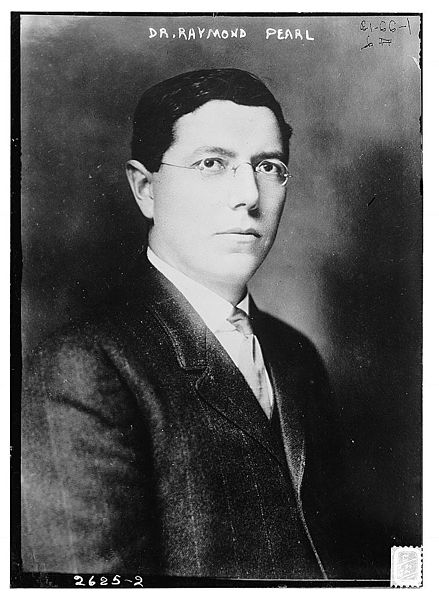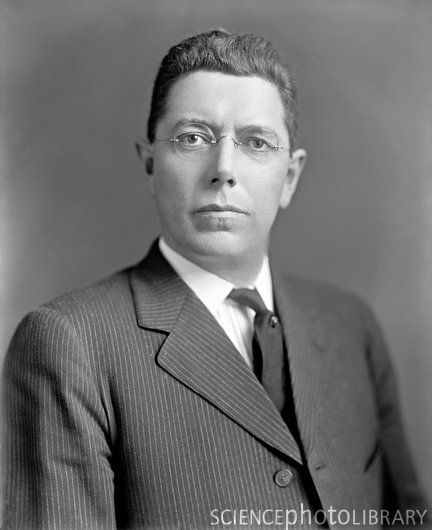<Back to Index>
- Biogerontologist Raymond Pearl, 1879
- Composer František Jan Škroup, 1801
- King of Denmark Frederick VIII, 1843
PAGE SPONSOR



Raymond Pearl (3 June 1879 – 17 November 1940) was an American biologist, regarded as one of the founders of biogerontology. He spent most of his career at Johns Hopkins University in Baltimore.
Pearl was a prolific writer of academic books, papers and articles, as well as a committed populariser and communicator of science. At his death, 841 publications were listed against his name.
Born of upper middle class parents in New England, Pearl excelled at school and went on to Dartmouth College where he gained his B.A. in 1899, and the University of Michigan where he gained his PhD in zoology in 1902. In 1906 he spent a year studying under Karl Pearson at University College, London. During this year he discovered biometry, which seemed to offer a solution to the problems he was concerned with in biology, zoology and eugenics. On his return to the US he continued his interests, but was converted from biometry to Mendelian genetics. Pearl maintained a loose interest in eugenics, but in 1927 published the landmark article The Biology of Superiority,
which attacked the basic assumptions of eugenics. The article was the
first general attack on eugenics by someone perceived as being within
the movement. It also contributed to the emergence of reform eugenics
and the population control movement, which Pearl contributed to by founding the International Union for the Scientific Study of Population Problems. Despite
his apparent rejection of eugenics, Pearl maintained relatively good
relations with key eugenicists and was never shy of expressing
extremely snobbish and class oriented views. He made many statements which have been interpreted as being anti - Semitic. On the other hand he worked for Black civil rights groups as an advisor. In 1926 Pearl founded The Quarterly Review of Biology. Pearl is regarded as one of founders of biogerontology. In 1908 Max Rubner observed that mammals of different size and longevity had equal mass specific metabolic output. Partly based on the observation that the longevity of fruit flies varies inversely with ambient temperature, Pearl (like Rubner) also asserted that maximum life span is inversely proportional to basal metabolic rate. Pearl accepted Alexis Carrel's erroneous ideas that normal somatic cells don't
age, and that aging must therefore be due to dysfunction at the body
level. Pearl speculated that lifespan was limited by vital cell
components that were depleted or damaged more rapidly in animals with
faster metabolisms. Denham Harman's free - radical theory of aging later provided a plausible causal mechanism for Pearl's hypothesis. The Rate of Living Hypothesis enjoyed prominence as one of the foremost theories of aging for nearly 50 years. The Rate of Living Hypothesis is undermined by the observation that a rat and a bat have similar metabolic rate, but a bat lives several times longer. More recently, further doubts have been raised on the Rate of Living Hypothesis by
the demonstration that, when modern statistical methods for correcting
for the effects of body size and phylogeny are employed, metabolic rate
does not correlate with longevity in mammals or birds. He also served on the board of trustees for Science Service, now known as Society for Science & the Public, from 1929 - 1935. Pearl was widely known for his lust for life and his love of food, drink, music and parties. He was a key member of the Saturday Night Club which also included H.L. Mencken. Prohibition made no dent in Pearl's drinking habits (which were legendary). In 1926, his book, Alcohol and Longevity, demonstrated that drinking alcohol in moderation is
associated with greater longevity than either abstaining or drinking
heavily. In 1938, his data and work demonstrated the negative health
effects of smoking tobacco. In November 1940 Pearl was in apparently good health and paid a visit to the Baltimore Zoo. He cut his trip short complaining of chest pains and died later that day.